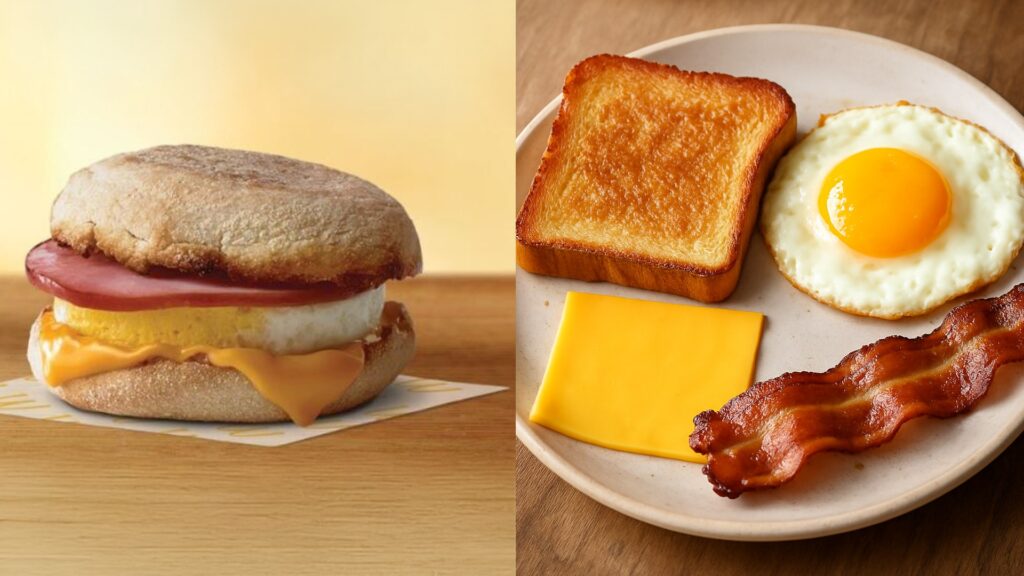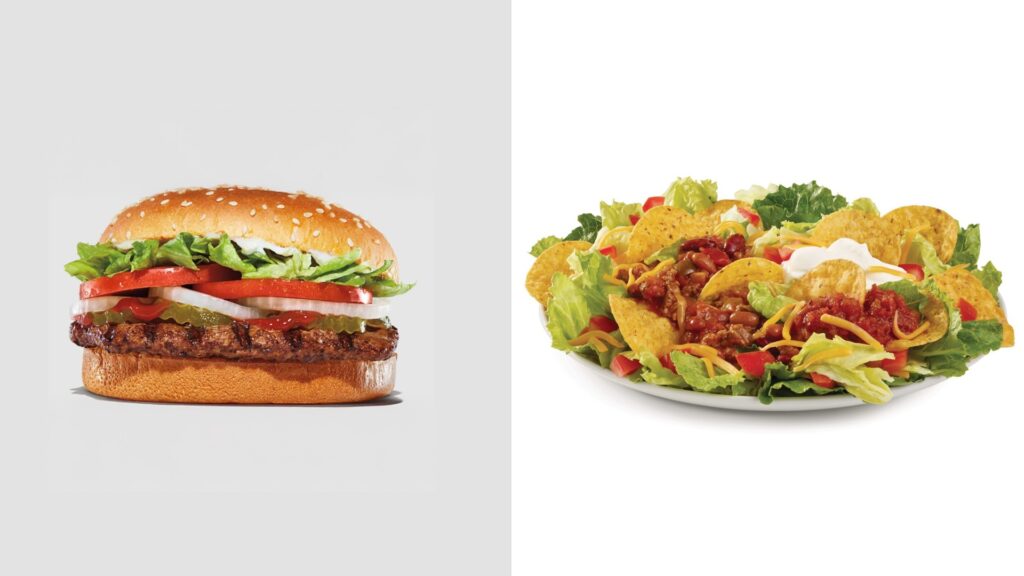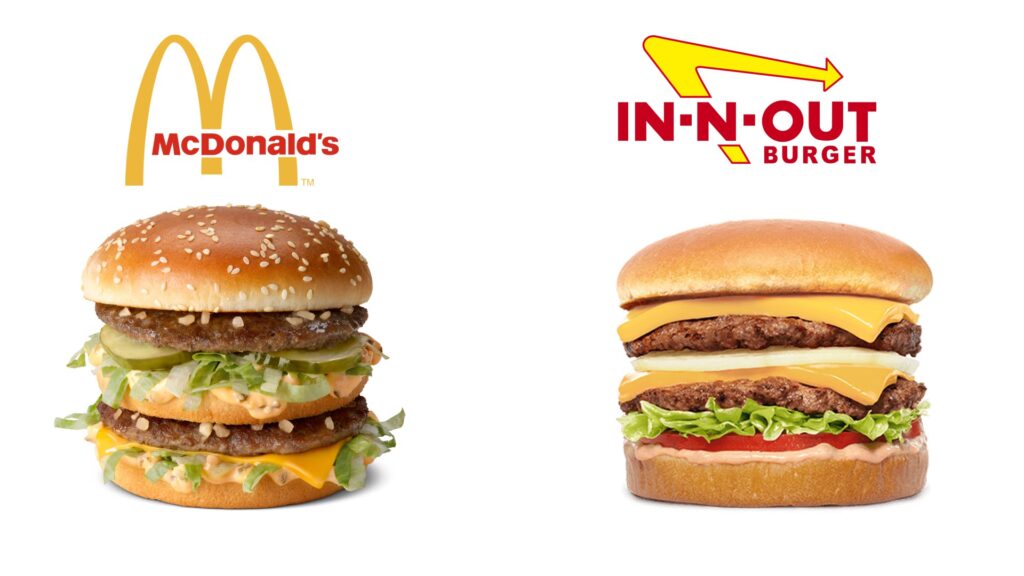
What If Your Favorite Foods Aren’t Actually Healthier — Just Better at Marketing?
(CLAIR | Simi Valley, CA) — Imagine this: You’re standing in line, trying to make a “smart” choice. You skip the burger and go for the salad. You pass up the greasy tenders and order grilled chicken. You feel good about it — like you’re doing something right.
But what if you weren’t? What if your decisions weren’t really based on facts — but on fonts, colors, and clever branding?
That salad? It might have more calories than the burger. That grilled chicken? Possibly just as salty as fried. And that “healthier” restaurant? Could be serving up the same ingredients as the fast-food place you avoid.
This isn’t a conspiracy. It’s marketing. And we all fall for it — even when we think we don’t.
Let’s process what we think we know about food, cities, and choices… and see how much of it holds up when we strip away the brand names.

The Great Salad Deception
Fast food salads come loaded with toppings — bacon, cheese, tortilla strips, and a pour of creamy dressing. Take Wendy’s Taco Salad. With everything added, it clocks in over 700 calories. Compare that to a Burger King Whopper, which sits around 630. So which one’s the “healthier” choice?
The truth is, we rarely check. We don’t need to. The word “salad” does the heavy lifting.

The Pizza Paradox
Say you’re choosing between California Pizza Kitchen and Domino’s. CPK feels healthier — airy dining rooms, sleek menus, grilled toppings. But many of their slices are heavier than Domino’s thin-crust options. A slice of CPK’s BBQ Chicken Pizza? Up to 350 calories. Domino’s thin crust cheese? Just 210.
Why do we assume one is better? Because one is branded as upscale, and the other as fast food. Simple as that.
Egg McMuffin vs. Homemade Breakfast
The McDonald’s Egg McMuffin is made with real egg, cheese, Canadian bacon, and an English muffin. Sounds familiar, right? If you made the same thing at home, you’d probably call it a “balanced breakfast.” But because it comes wrapped in that golden-arch paper, we dismiss it as “processed junk.”
Again, the difference isn’t the food — it’s the context. The wrapper. The logo.

Chick-fil-A vs. KFC: A Branding Case Study
Ask people which chicken tenders they’d rather eat — Chick-fil-A or KFC — and many won’t hesitate. Chick-fil-A feels “cleaner,” “fresher,” maybe even “healthier.” But here’s the real data:
- Chick-fil-A (3-count strips): 310 calories, 14g fat
- KFC Extra Crispy Tenders (3 pc): 400 calories, 22g fat
A difference, sure, but not enough to justify the moral superiority people seem to feel biting into one over the other. Maybe it’s the sauce packet. Maybe it’s the tone of the drive-thru voice. Or maybe it’s the way branding can make food feel like a personal statement — one that says something about who you are.

Big Mac vs. In-N-Out: The Battle of Burgers
Let’s be honest — we love In-N-Out. It feels fresh, clean, even wholesome. The paper hats, the tiny menu, the palm trees on the cups. People treat the Double-Double like a rite of passage.
But compare the numbers:
- In-N-Out Double-Double: 610 calories, 34g fat
- McDonald’s Big Mac: 580 calories, 25g fat
Nutritionally, they’re closer than most people realize. But the perception couldn’t be more different. One is a symbol of fast food excess. The other is a cult favorite. That difference? It’s branding. Plain and simple.
It’s Not Just Food
This kind of branding bias shows up everywhere. In the places we live. Some towns — like Simi Valley — get labeled as family-friendly, safe, clean. Others never shake old reputations, even if the numbers say otherwise. Is that based on actual stats? Or something that started with a few headlines years ago?
It happens in politics too. Candidates are brands. Voters respond to fonts, color schemes, taglines. We say things like “they seem honest,” even when we haven’t read their platform.
So… what else are we getting wrong?
Try This Yourself
Don’t just take my word for it. Run your own brand check:
- Blind taste test: Compare fast food and homemade. Or switch sauces. Serve two kinds of tenders without revealing which is which.
- Calorie swap: Look up your go-to “healthy” order and compare it to a supposedly “unhealthy” one. You might be surprised.
- Neighborhood walk: Visit a local Simi Valley spot you’ve written off. Talk to a neighbor. See if what you find matches what you assumed.
Because here’s the question: How many of your beliefs are actually yours? And how many were handed to you with a smile and a logo?
Final Bite
This isn’t about shame or guilt. It’s about curiosity. We make quick decisions based on how things look or feel. That’s human. But sometimes it’s worth stepping back and asking: Do I actually know this… or do I just think I do?
And if that Chick-fil-A sauce ended up on a KFC tender… would you even notice?















